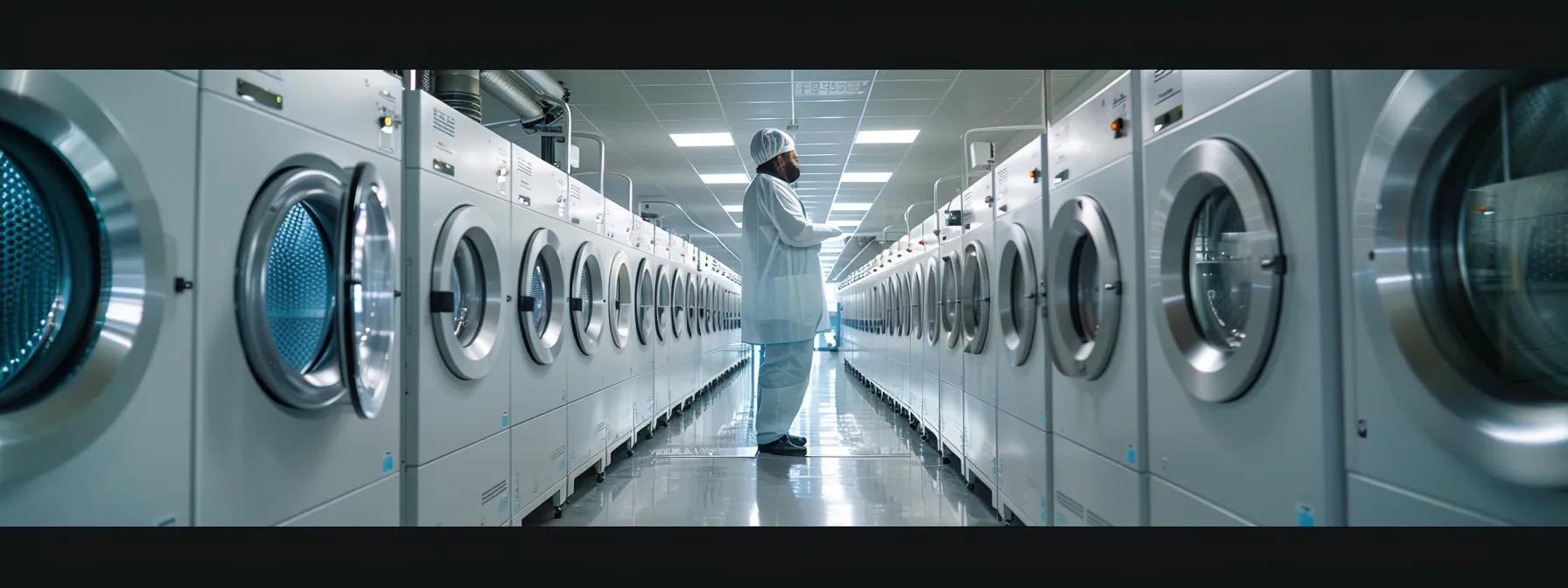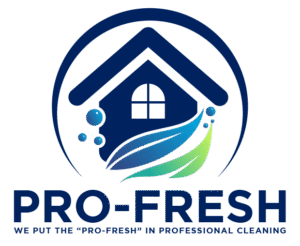
Commercial Dryer Vent Cleaning Services: How to Improve Safety and Efficiency for Your Business
Introduction
Commercial dryer vent cleaning is a critical maintenance practice that directly affects a business’s safety, energy efficiency, and overall laundry operations. When lint, debris, and contaminants build up in dryer vents, the efficiency of the dryer is compromised, fire hazards increase, and energy costs rise. Businesses such as laundromats, hotels, apartments, and other properties that rely on commercial dryers benefit from regular vent cleaning to prevent costly repairs, lower operating expenses, and comply with safety regulations. In this article, we explain the importance of dryer vent cleaning, the services offered, and how to choose the best cleaning company. We cover cleaning frequency, cost benefits, warning signs, and the latest innovative cleaning technologies – all helping business owners make informed decisions while optimizing dryer performance and safety.
Transitioning now into the detailed discussion, the following sections describe the many aspects and benefits of commercial dryer vent cleaning services, starting with why it is so important.
Why Is Commercial Dryer Vent Cleaning Important for Businesses?
Commercial dryer vent cleaning minimizes fire risks and boosts system efficiency while reducing operating costs. Removing lint and debris allows dryers to operate with unobstructed airflow, preventing overheating and potential combustion. Regular cleaning also supports regulatory compliance by meeting fire safety codes and extends equipment life by minimizing wear. In short, investing in clean dryer vents improves indoor air quality, reduces repair costs, and ensures consistent dryer performance.
How Does Dryer Vent Cleaning Reduce Fire Hazards?
Dryer vent cleaning removes flammable lint that can ignite at low temperatures, reducing fire risks significantly. Regular cleaning ensures that obstructions are cleared, allowing efficient airflow and preventing dangerous heat buildup inside the vents. This proactive maintenance is especially crucial in high-use settings like laundromats and hotels, where even a small blockage can lead to serious overheating and potential fires.
What Are the Energy Efficiency Benefits of Regular Vent Cleaning?
Clean dryer vents improve energy efficiency by optimizing airflow, which helps dryers reach the correct temperature faster and complete drying cycles more quickly. When vents are blocked, dryers work harder, leading to longer cycles and increased energy consumption—sometimes up to a 30% increase during a single cycle. Improved efficiency not only lowers utility bills but also reduces the carbon footprint and prolongs the life of equipment by preventing excessive wear.
Which Commercial Properties Need Dryer Vent Cleaning Most?
Properties with high dryer usage, such as laundromats, hotels, and large apartment complexes, need regular vent cleaning due to rapid lint accumulation and higher fire risks. Additionally, hospitals, spas, and fitness centers with in-house laundry facilities benefit from more consistent maintenance to ensure operational reliability. Commercial properties with centralized laundry operations often face complex vent systems that require frequent cleaning to maintain efficiency and meet strict fire safety standards.
What Does a Professional Commercial Dryer Vent Cleaning Service Include?
A professional cleaning service begins with a detailed inspection using tools like borescopes to assess lint buildup and duct condition. Technicians then use rotary brushes, air whips, and powerful vacuums to clear both short and long duct runs. Many services also include cleaning of external vent covers and exhaust points. Some companies offer maintenance plans that integrate periodic cleaning with inspections to detect early wear or damage, along with providing documentation to support compliance with fire codes.
How Are Dryer Vents Inspected for Lint Buildup and Blockages?
Inspection of dryer vents uses both visual and technology-assisted methods. Technicians begin with an external check and deploy high-resolution cameras or borescopes to examine the entire duct. Airflow meters are then used to measure ventilation efficiency. This process not only identifies lint accumulation but also pinpoints areas of potential blockage, allowing timely repairs or adjustments that maintain safe and efficient operation.
What Equipment Is Used for Commercial Dryer Vent Cleaning?
The cleaning process relies on specialized equipment: – Rotary Brushes: These flexible-bristled tools remove stubborn lint deposits. – Air Whips: They provide bursts of compressed air to dislodge debris. – High-Powered Vacuums: They extract loosened debris, restoring proper airflow. – Inspection Cameras and Airflow Meters: These devices assess duct conditions and cleaning effectiveness. Together, these tools ensure that dryer vents are cleaned thoroughly and efficiently, reducing downtime and enhancing safety.
How Is Dryer Vent Repair and Replacement Handled?
If inspection reveals significant damage, technicians may recommend repairs such as resealing duct joints or replacing vent covers. In severe cases, where the duct structure is compromised, portions or the entire vent may be replaced. Repairs are often performed alongside cleaning to minimize disruption. Using durable materials and thorough documentation, professional companies ensure that repairs meet safety standards and help maintain long-term system performance.
What Are Preventative Maintenance Plans and How Do They Work?
Preventative maintenance plans establish a regular schedule based on dryer usage and property type. Technicians perform scheduled inspections and cleaning—often quarterly or bi-annually—to detect early signs of wear or blockages. These plans include follow-up reports that document airflow improvements and energy savings. The proactive approach minimizes emergency repairs, extends equipment life, and ensures ongoing compliance with safety regulations while reducing overall maintenance costs.
How to Choose the Best Commercial Dryer Vent Cleaning Company Near Me?
Selecting the right cleaning company requires careful review of experience, equipment quality, certifications, and customer feedback. Business owners should verify that technicians are well-trained in commercial vent cleaning and repair, and that the company complies with all local fire and safety regulations. Look for detailed cleaning reports, insurance coverage, and customized service plans that match the property’s specific needs—whether it’s a high-volume laundromat or a large hotel facility. A reliable provider not only improves energy efficiency but also offers tangible returns on investment through reduced operating risks.
What Qualifications and Expertise Should Technicians Have?
Technicians must be formally trained and certified in commercial dryer vent cleaning. They should be proficient with advanced equipment and knowledgeable about fire safety regulations and airflow dynamics. Employers should verify that technicians have undergone comprehensive safety training and have practical field experience. Certifications from recognized industry associations serve as proof of competence, ensuring that the work is performed safely and to the highest standards.
How to Verify Safety Compliance and Fire Regulation Standards?
Businesses should request documentation of compliance, such as certificates from fire safety authorities and adherence to local building codes. Reputable cleaning companies share their safety protocols and provide detailed cleaning reports before and after service. Additionally, contacting local regulatory bodies or fire departments can help confirm that the company follows all applicable fire safety standards, thereby reducing liability and ensuring operational safety.
What Customized Solutions Can Commercial Properties Expect?
Cleaning service providers offer tailored solutions based on the property’s size, number of dryers, and vent system design. For high-use properties like hotels and large apartments, specialized maintenance plans may include more frequent inspections and targeted cleaning in high-traffic areas. Smaller facilities might opt for less frequent sessions combined with remote monitoring. Furthermore, companies often provide repair options or recommendations for equipment upgrades, ensuring that cleaning solutions are aligned with the unique operational needs of each business.
How Often Should Commercial Dryer Vents Be Cleaned?
The cleaning frequency depends on dryer usage, equipment age, and vent design. High-usage environments such as laundromats and hotels generally require vent cleaning every three to six months, while smaller operations might need only annual maintenance. Regular inspections allow for adjustments in the cleaning schedule based on system condition and usage patterns, ensuring that vents remain free of obstructions and operate efficiently.
What Factors Affect Cleaning Frequency for Different Businesses?
Several factors influence cleaning intervals: – Dryer Usage: High-volume operations produce more lint. – Property Type and System Design: Longer or more complex vent systems may trap more debris. – Environmental Factors: Areas with high dust or pollution may require more frequent cleaning. – Historical Maintenance Records: Past trends help predict future needs. Each factor is considered to develop a maintenance plan that protects equipment, saves energy, and reduces fire risks.
How Does Scheduled Maintenance Prevent Dryer Vent Problems?
Scheduled maintenance helps identify and resolve issues before they escalate into major problems. Regular cleaning and inspections prevent clogs, reduce the risk of overheating, and extend the lifespan of dryer equipment. By maintaining optimal airflow and catching repair needs early, businesses can avoid emergency repairs and lower overall energy consumption, leading to stable operation and cost savings.
What Are the Cost Benefits of Commercial Dryer Vent Cleaning?
Regular dryer vent cleaning offers significant financial advantages. By improving energy efficiency and reducing the need for emergency repairs, businesses can lower utility bills and extend equipment lifespan. Clean vents lower the risk of fire damage, which in turn can reduce insurance premiums. Over time, these savings contribute to a strong return on investment, making routine vent cleaning a cost-effective component of maintenance strategies.
How Does Cleaning Lower Energy Consumption and Operating Costs?
Unobstructed vents allow dryers to work efficiently, reducing drying times and energy usage by an estimated 20–30%. When dryers do not have to compensate for blocked vents, they experience less wear and tear, resulting in fewer repairs. The overall effect is lower operational costs, improved dryer performance, and reduced environmental impact, all of which contribute to better profitability.
What Is the ROI of Regular Dryer Vent Maintenance?
Regular maintenance offers a high return on investment by cutting energy expenses and reducing repair costs. By preventing unexpected breakdowns and extending equipment lifespan, businesses achieve lower utility bills and fewer emergency repair expenses. Additionally, documented improvements can help negotiate lower insurance premiums. Overall, the benefits of regular vent cleaning — including enhanced safety and energy efficiency — make it a financially sound strategy.
What Are Common Signs That Commercial Dryer Vents Need Cleaning?
Warning signs that cleaning is needed include longer drying times, decreased airflow, and unusual heat buildup around the dryer. A burning smell or visible lint near the vent exit are also clear indicators that the system is clogged. Noticing these early signs allows property managers to schedule maintenance promptly, preventing further energy waste and reducing fire risks.
How to Identify Dryer Performance Issues Related to Vent Blockages?
Dryer performance issues can be identified through symptoms such as extended drying cycles, higher energy bills, and overheating. A noticeable buildup of lint around the vent or inconsistent drying performance suggests blockages. Technicians use airflow measurements and visual inspections to confirm issues, ensuring that early intervention restores efficient and safe dryer operation.
What Fire Safety Risks Indicate Immediate Cleaning Is Needed?
Immediate cleaning is necessary when significant lint buildup, overheating, or a burning smell is observed near the vent exit. These conditions not only increase fire risk but may also rapidly lead to dangerous temperatures inside the duct. Acting promptly to clean or repair the vent system helps protect both property and lives by mitigating imminent fire hazards.
What Are the Latest Technologies in Commercial Dryer Vent Cleaning?
Recent technological advancements have improved dryer vent cleaning significantly. Tools such as rotary brushes, air whips, and high-powered vacuums are now complemented by diagnostic equipment like high-resolution cameras and airflow detectors. These innovations allow technicians to efficiently clean even the most complex duct systems, provide detailed inspection data, and help schedule precise maintenance – all of which enhance safety and energy efficiency.
How Do Rotary Brushes and Air Whips Improve Cleaning Effectiveness?
Rotary brushes, with their flexible bristles, and air whips, which deliver bursts of compressed air, work together to dislodge and remove debris from dryer vents. This dual-action method effectively clears both heavy lint buildup and finer particles, ensuring that the vent is thoroughly cleaned and the airflow is fully restored. The result is improved dryer performance and a reduced risk of fire.
What Role Do Powerful Vacuums Play in Vent Cleaning?
High-powered vacuums are essential for capturing and removing debris dislodged by rotary brushes and air whips. Their strong suction pulls away both large lint clumps and fine dust, leaving the vent system clear and fully functional. This step is crucial in restoring optimal airflow, reducing energy consumption, and preventing secondary contamination.
Table: Comparison of Commercial Dryer Vent Cleaning Equipment
Before exploring the next FAQ section, here is a table summarizing key equipment used in commercial dryer vent cleaning and their benefits.
| Equipment | Primary Function | Benefit | Key Attribute |
|---|---|---|---|
| Rotary Brushes | Dislodges built-up lint and debris | Thorough cleaning in bends and corners | Flexible bristle design |
| Air Whips | Blasts compressed air to loosen deposits | Enhances removal efficiency | Pulsed air blasts |
| High-Powered Vacuums | Suctions away loosened debris | Restores airflow and reduces fire risk | High suction power |
| Inspection Cameras | Provides interior duct visualization | Detects blockages and damage early | High-resolution imagery |
| Airflow Meters | Measures vent airflow efficiency | Quantifies cleaning effectiveness | Precise airflow data |
This table demonstrates that each piece of equipment plays a unique role; used together, they offer a comprehensive solution to maintain vent safety and efficiency.
Frequently Asked Questions
Q: How critical is regular dryer vent cleaning in preventing fires?A: It is essential because it removes combustible lint and debris, significantly reducing fire risk and supporting regulatory compliance.
Q: What is the typical cost benefit of implementing a scheduled vent cleaning plan?A: Regular cleaning lowers energy costs by enhancing efficiency and reduces the expense of emergency repairs, resulting in a strong return on investment.
Q: How can businesses verify that a cleaning service adheres to fire safety regulations?A: By requesting certifications, compliance records, and detailed cleaning reports from the service provider, and by consulting local regulatory bodies.
Q: What factors determine the frequency of dryer vent cleaning in commercial settings?A: Factors include the volume of dryer usage, duct complexity, environmental dust levels, and historical maintenance trends.
Q: Can advanced technologies in vent cleaning really make a difference in dryer performance?A: Yes, they ensure a thorough cleaning that restores optimal airflow, thereby improving efficiency, reducing energy consumption, and extending appliance lifespan.
Q: Do maintenance plans offer customized solutions based on property needs?A: Absolutely. Plans are tailored to factors such as the number of dryers, vent layout, and usage patterns, ensuring targeted maintenance.
Q: How do early signs of vent blockages impact overall dryer efficiency?A: Early signs like longer drying times and decreased airflow directly hinder efficiency and, if left unaddressed, increase energy costs and fire risks.
Final Thoughts
Commercial dryer vent cleaning services are essential for safe, efficient, and reliable laundry operations. Regular cleaning—supported by advanced technologies—reduces fire hazards, cuts energy consumption, and lowers operating costs. By selecting a qualified cleaning service that offers tailored maintenance plans, businesses can ensure their equipment runs optimally while complying with safety regulations. Embracing preventative maintenance not only enhances performance but also secures long-term financial and operational benefits.







